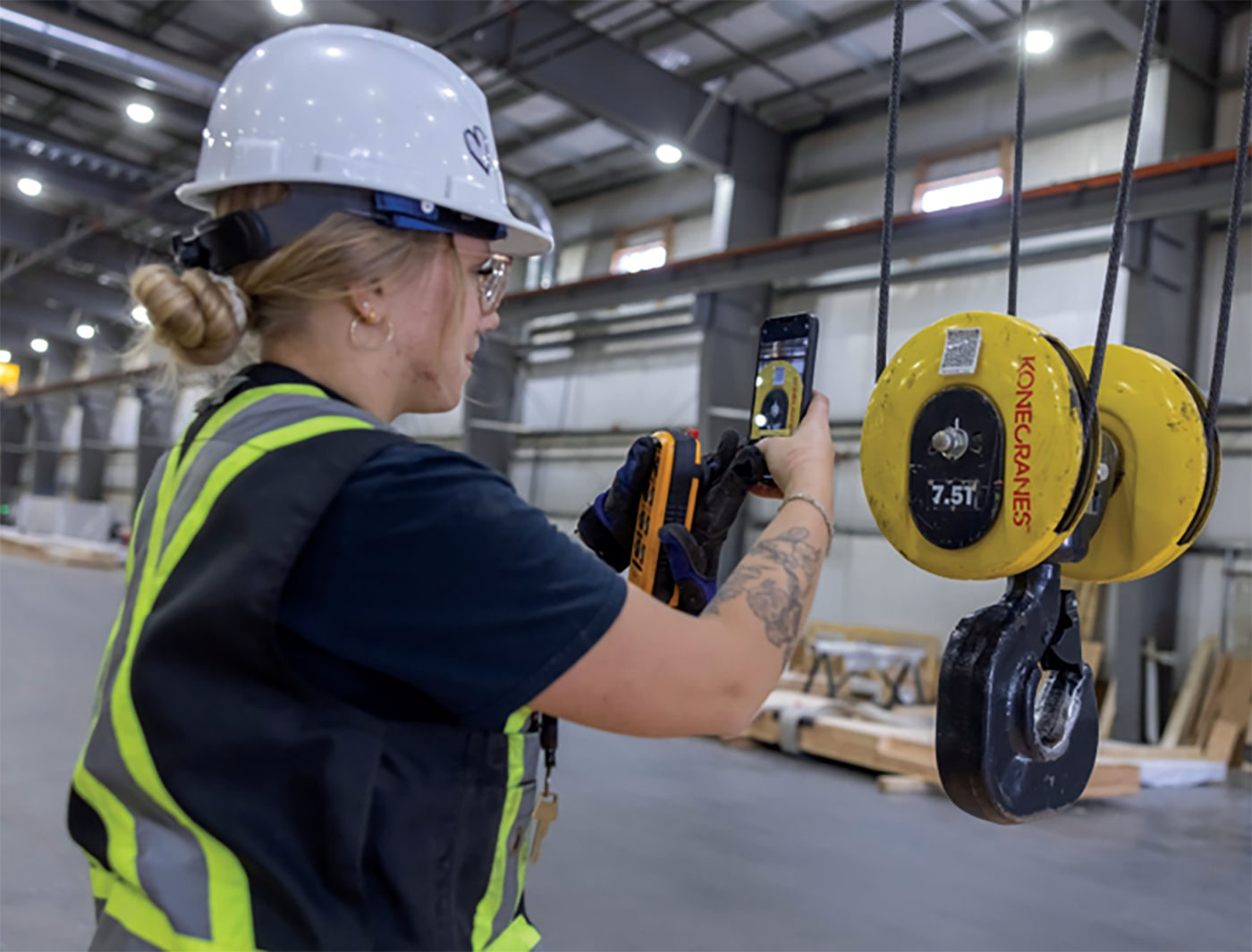Innovative safety tech built on firm ground
Tradition is in Kalesnikoff’s DNA. The mass timber and lumber company is a fourth-generation family-run enterprise with an 85-year history in the Kootenays and deep roots in one of the province’s most firmly established industries. Yet Kalesnikoff is anything but entrenched: In fact, in everything from its products to its health and safety practices, the firm epitomizes innovation.
By Susan Kerschbaumer
Forestry 2.0
Located midway between Castlegar and Nelson, Kalesnikoff’s sawmill produces lumber for worldwide markets. Just 10 minutes down the highway, the company’s focus moves from the familiar to the high-tech. Here, Kalesnikoff manufactures high-performance building materials in a state-of-the-art mass timber plant — one of the most advanced facilities of its type in North America.
Mass timber is an engineered, wood-based structural building material. Environmentally friendly, earthquake-resistant, and lightweight, it’s ideal for constructing the taller, larger buildings that urban density demands. Building with mass timber saves construction time and labour costs. It also reduces a building’s carbon footprint by up to 25 percent, producing fewer emissions than standard materials while sequestering carbon from the atmosphere.
Health and safety revolutionized
Beyond its products, the company is equally proud of its old-fashioned “people-first” approach. “Our culture comes from how we treat our people — from the idea that they are our most valuable resource,” says Kalesnikoff safety manager Benjamin Cram. He adds that its workers’ health and safety is the top priority. And with an innovative take on forestry, Kalesnikoff implements its traditional values in a modern way.
Throughout its facilities, the firm has incorporated high-tech advancements to keep workers safe. In 2015, Kalesnikoff’s IT department created apps that allowed the company to replace its paper posters, forms, and binders with digital versions that are more accessible, more trackable, and easier to update. Four years later, they installed proprietary safety-management software that helped them move their pre-use inspection and other health and safety programs completely online.
All there, in black and white
But the company wasn’t content to stop there. Rather than simply using the software as designed, they wondered how they could digitize their systems even more. Their answer? Quick response (QR) codes. Today, all health and safety-related information is tied to the little black-and-white pixelated squares that allow workers to have “everything at their fingertips,” says Cram.
QR codes appear on signs throughout the facilities. When scanned by a smartphone, they give workers immediate access to all the information they need to stay safe at work. And unlike paper records, the documentation accessed via QR code is live, so “everyone’s always working from the newest, most up-to-date version,” Cram says. Employees can use their phones to view safe work procedures, get a quick refresher on any aspect of their training, or report safety concerns.
QR codes also mean a more efficient preventive maintenance program. Workers’ input goes digitally — and immediately — to a maintenance manager, who can respond on the spot. “Using paper is a one-directional system,” says Cram. With the digital process, “the worker knows they’ve been heard. There’s no lag. A workers’ ‘The forklift is low on oil’ gets a ‘Thanks! We’re on it’ right back.” The technology allows management to minimize more serious risks, too. Employees responsible for cleaning up combustible dust, for example, scan QR codes to indicate which areas have been cleaned and which still need attention.
The digital system also means more accountability. When an issue arises, managers can refer to the digital trail that details what maintenance was done, whether a deficiency was reported, and, if so, what response it received.
Next-level lockout signage
Most recently — and perhaps most notably — Kalesnikoff made QR codes an integral part of the lockout process. Within each gate is a unique sign with a QR code and a map highlighting the de-energized area. Workers can use the code to view all of the safe work practices, instructions, and hazards that apply to that particular location. To date, Kalesnikoff’s next-level lockout signage appears in 120 areas of the mass timber facility; this year, the company will outfit the sawmill, as well.
WorkSafeBC occupational safety officer (OSO) M. Peters is enthusiastic in his praise of Kalesnikoff’s high-tech and “huge” safety culture. For Kalesnikoff, safety isn’t just about “some dusty posters in the corner of the shop,” he says. “They’re making it easy to use and easy to access. And the easier you make it, the more buy-in you’ll get for it.” Because of the company’s efforts, OSO Peters says, “workers have told me they want to work for this firm because they feel safe and are actively a part of it; they’re involved.”
The forward-thinking company continues to look for more ways to innovate. On the product side, they’re busy manufacturing mass timber for an ultra-modern, all-wood, honeycomb-design building in Vancouver to house Nature’s Path Foods. On the safety side, Cram continues to explore the myriad possibilities offered by QR codes. Next on his agenda is tying the codes — and all the detailed information they can provide — to individual workstations.
For more information
Visit our De-energization and lockout webpage.
This information originally appeared in the Summer 2024 issue of WorkSafe Magazine. To read more or to subscribe, visit WorkSafe Magazine.

